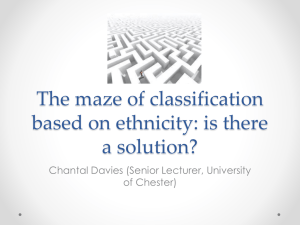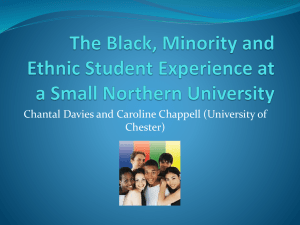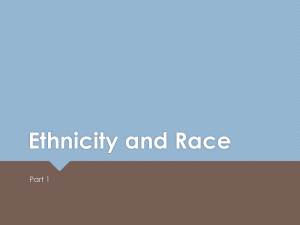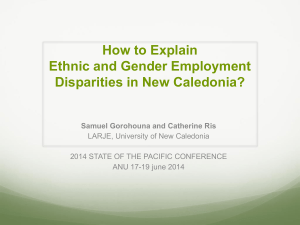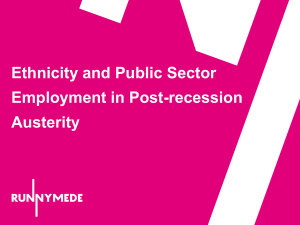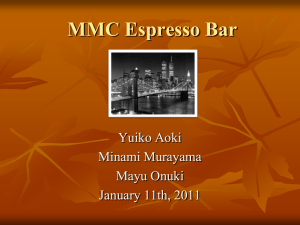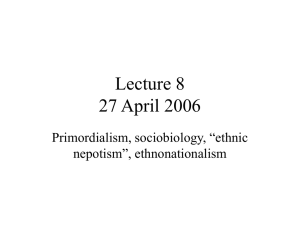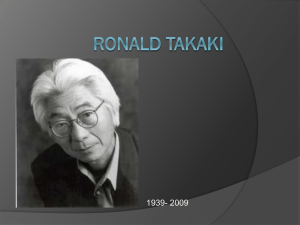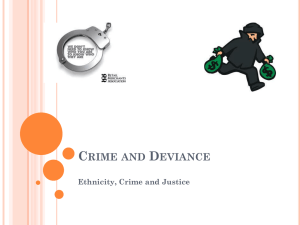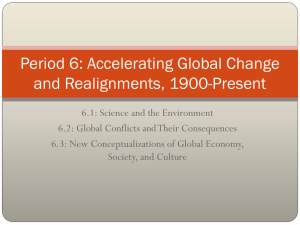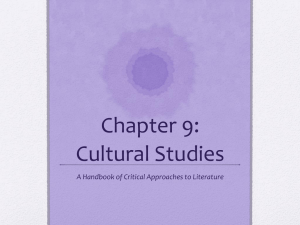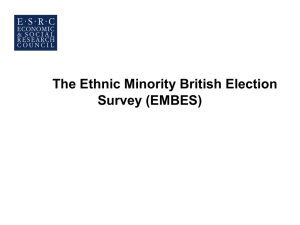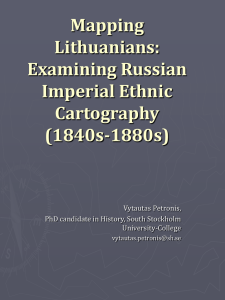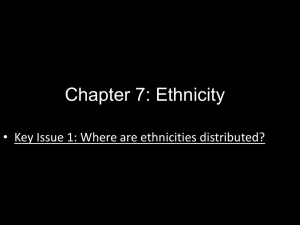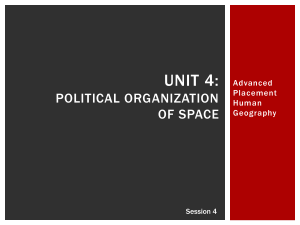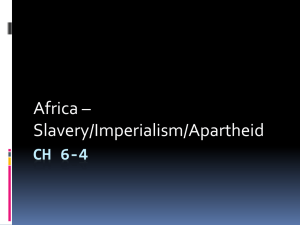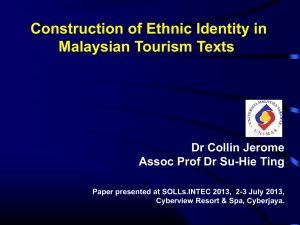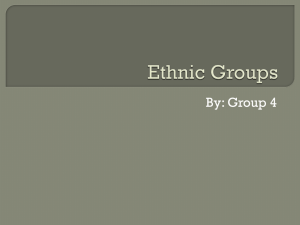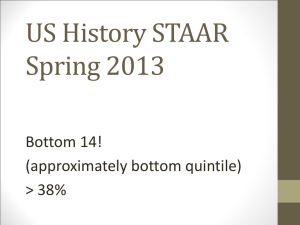South Africa, Ethnicity, Civil Conflict
advertisement
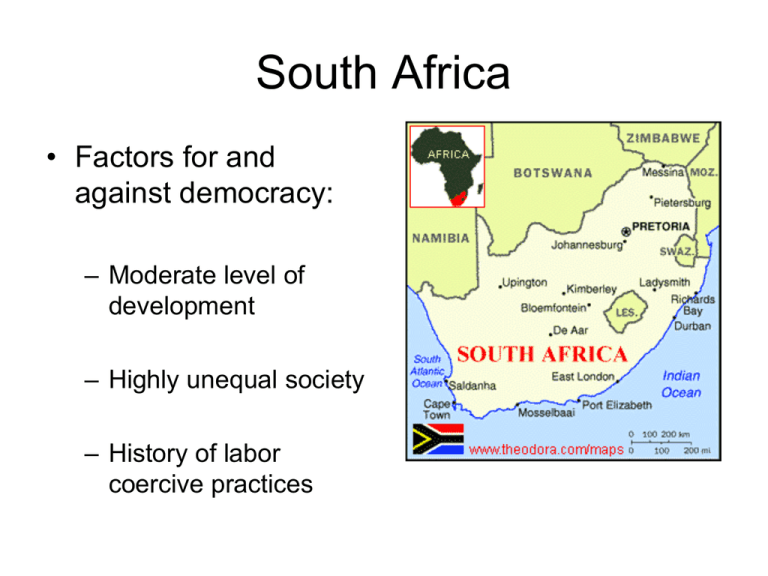
South Africa • Factors for and against democracy: – Moderate level of development – Highly unequal society – History of labor coercive practices General backdrop: Apartheid • Established in 1948 with coming to power of National Party • Three parts: – Political: complete exclusion of non-whites from political process. – Economic: use of coercive means to keep wages of non-whites low. – Social: physical separation of races. General backdrop: Apartheid • But, economic and social goals conflicted: the dependence of whites on non-white labor made segregation difficult. General backdrop: Apartheid • Solution: Homelands policy. • But, this never really worked. Africans came to the cities anyway. Timeline of African Response • 1912: Formation of ANC • 1950s: Initial response to apartheid – Freedom Charter (1955): non-racial democracy, mild socialism. – Sporadic peaceful protests. – State response: ban ANC, jail leaders – Why so easy to contain? Small urban population. Timeline of African Response • 1960s: Quiet decade of economic growth – Urban African populations grew (and grew!) – Flourishing of civil society in African areas Timeline of African Response • 1970s: – New organizations, political movements • Young people influenced by Black Consciousness • Civics • Trade Unions – Economic slowdown – Renewed protest: 1976 riots in Soweto, spread to rest of country. – Much harder for the state to contain. Timeline of African Response • P.W. Botha liberalizes the unions in 1978: – The hope: this will moderate the conflict. – The reality: Unions (COSATU) initiate wave after wave of protest in early 80s. • United Democratic Front (UDF) forms, contributes to mass insurrection. • South Africa: “ungovernable” by 1986. Timeline of African Response • Mid 1980s: Economic Crisis – Worker productivity down – Massive capital outflows – IMF cuts off loans • South African capitalists: Apartheid not worth it! Begin pressuring government to negotiate. Negotiations and Love Songs • 1990-1993: Hammering out a plan – ANC, NP: Very different notions of what “New” South Africa should look like – Dicey moments, but desire to avoid war kept both parties at the table. – Deal involved compromises for everyone • April 1994: Nelson Mandela elected Conclusions • Structural factors mattered: – Greater development made protest easier. – Change in interests of economic elite key to initiation of negotiations. • However, political factors mattered also: – Economic interests changed because of political protests – Political leadership key at certain critical points. Conclusions • Finally, international factors once again very important. Domestic politics cannot tell us the whole story. Extra Office Hours • Schedule an appointment with me if you can’t make my office hours. • Steve Oliver: 11-1:50 Monday (today!) SSB 328 • Lydia Lundgren: 10:30-12:30 Monday (today!) SSB 323 • Kai Ostwald: 10:30-11:30 Monday (today!) SSB 326 Definition: Ethnic Group • Membership determined by descent or ancestry. Ethnic identity is ascriptive: something you are born with instead of something you choose. • Members of ethnic groups know and value membership in the group. It has meaning to them. Definition: Ethnic Group • Group members share distinguishing cultural features. • The group has a shared history, which may be partially invented. • Most ethnic group has a homeland, or at least memories of one. Factoids • Ethnic identities are quite prevalent. • Ethnic identities are only one of many different kinds of collective identities. Other examples: class, occupation, age, gender, hobby, school ties, sports affiliations, etc. Factoids • Ethnic identities are distinguished from many other types of identity (esp. economic ones) in that they are less voluntary in nature. But even here, there’s ambiguity. Classic Approaches to Ethnicity • Liberalism: – Ethnicity is “morally suspect” because it places groups above individuals. For better or worse, modernization would dissolve ethnic ties, create “new” people unconnected to the old ways. – Fiction: White Teeth by Zadie Smith; Hunger by Lan Samantha Chang Classic Approaches to Ethnicity • Marxism: – Ethnicity is epiphenomenal, secondary to deeper forces (i.e. material interests). – Ethnic identifications = false consciousness. – Marxist revolution (Workers of the World Unite!) will end ethnic based thinking. But the reality is . . . • Ethnicity is alive and well in all corners of the globe! • Developed countries: anti-immigrant parties in Europe, separatist movements in Spain and Canada, minority mobilizations in US. But the reality is . . . • Former communist countries of Eastern Europe: many new ethnic mobilizations. • Developing countries: economic development fuels ethnic mobilization. • Since the end of the Cold War, the world has seen a series of destructive wars in which ethnicity has played some role. Primordialism • Ethnic identities are more fundamental than other types of identitity. Ethnicity is not subject to rational cost/benefit calculations. It belongs to the realm of emotion. • Ethnicity is immutable, unchangeable, fixed. Primordialism • Ethnic mobilizations are motivated by expressive not instrumental needs. – Participation is related to our search as human beings for security in an insecure world. – Individual self esteem is a function of group position. – More about expressing belonging than further self interest. • Conflict based on ethnicity is inevitable, persistence is a given. Instrumentalism • Ethnic identities are not more fundamental or powerful than other types of identity. • Ethnicity is fluid. Individuals have multiple identities, these identities shift according to context. Instrumentalism • Mobilization is about getting something. People join ethnic movements when there is a pay-off to doing so. Furthermore, when it is useful to them, they may even invent new identities. • Ethnicity leads to conflict when someone has something to gain from going to war. Instrumentalism • Persistence? As long as ethnicity is a useful way of organizing people, it will persist. Critiques of each theory? • Primordialism: – Empirically, identities do appear to shift according to context. – If conflict is so inevitable, how do you explain long periods of peace? And why are most multiethnic societies peaceful? Critiques of each theory? • Instrumentalism: – How do we explain the intensity and emotional quality of ethnic bonds? – Ethnic conflict may be instrumental for leaders, but it rarely is for followers. How do we explain their behavior? What is civil conflict? • Examples: civil war, rebellions, insurrections, political revolutions, social revolutions, genocides. • Definition: sustained armed conflict within a state that involves large numbers of people either as participants or as victims. “State” versus “Society” • Society: basic social forces and groups, the population at large and how it is structured and organized. • State (review): the set of permanent institutions and structures of authority in a country. “State” versus “Society” • What is the relationship between them? – State is a mirror that reflects society. Politics is a function of social forces alone. – State is not just a mirror: it exerts an independent effect out outcomes. We can’t just look at society to understand politics! Have to look at state too. Society-Based “Bottom Up” • Misery breeds revolt: civil conflict is a function of the level of grievance in the population. • Variants: – Ethnic group hatreds – Extreme poverty and deprivation – Unfulfilled expectations (economic crisis) Political Entrepreneurs • Grievance alone is insufficient to produce war. Politicians provide the spark that converts grievance into action. • Motivations of politicians vary from idealism to personal gain. Political Entrepreneurs • Articulate existing grievances, sometimes even accentuating them. • May not be enough: collective action problems may prevent people with common grievances from acting together. Examples: free-rider problem, first-mover problem. Free Rider Problem • There are gains to collective action. • No one can be excluded from these gains, even if they didn’t take part in the action. • High personal costs to taking part. • Individual rationality: don’t participate, don’t pay costs, yet capture benefits. “Free-ride.” • Everyone free-rides, no collective action, no collective benefits. First Mover Problem • Risks for collective action are highest for those who act first. • Once everyone else is acting, then risks decline. “Safety in numbers.” • But who will go first? An action may be highly desirable by everyone, but may never occur because no one is willing to take the first step. Political Entrepreneurs • Politicians help people overcome collective action problems: – Provide selective benefits to participation (to overcome free-riding problem) – Throw the first stones (to overcome firstmover problem) State Centric “Top Down” • Grievances (even grievance organized by politicians) is insufficient for explaining civil conflict. • State factors are key: are the state’s coercive organizations coherent and effective? If yes, grievances are never allowed to flower. Strengths/Weaknesses • Bottom-up approach – Pros: explains why ordinary people might participate in conflict. – Cons: Can’t explain why grievances persist for long periods of time without producing conflict. Strengths/Weaknesses • Political entrepreneurs approach: – Pros: Better at explaining timing. – Cons: Why do people follow politicians into war? When do politicians see war as a better option than working within institutions? Strengths/Weaknesses • State centric approach – Pros: Can better explain incentives of political leaders. – Cons: State weakness is insufficient for explaining violence. Many weak states never experience civil conflict.

